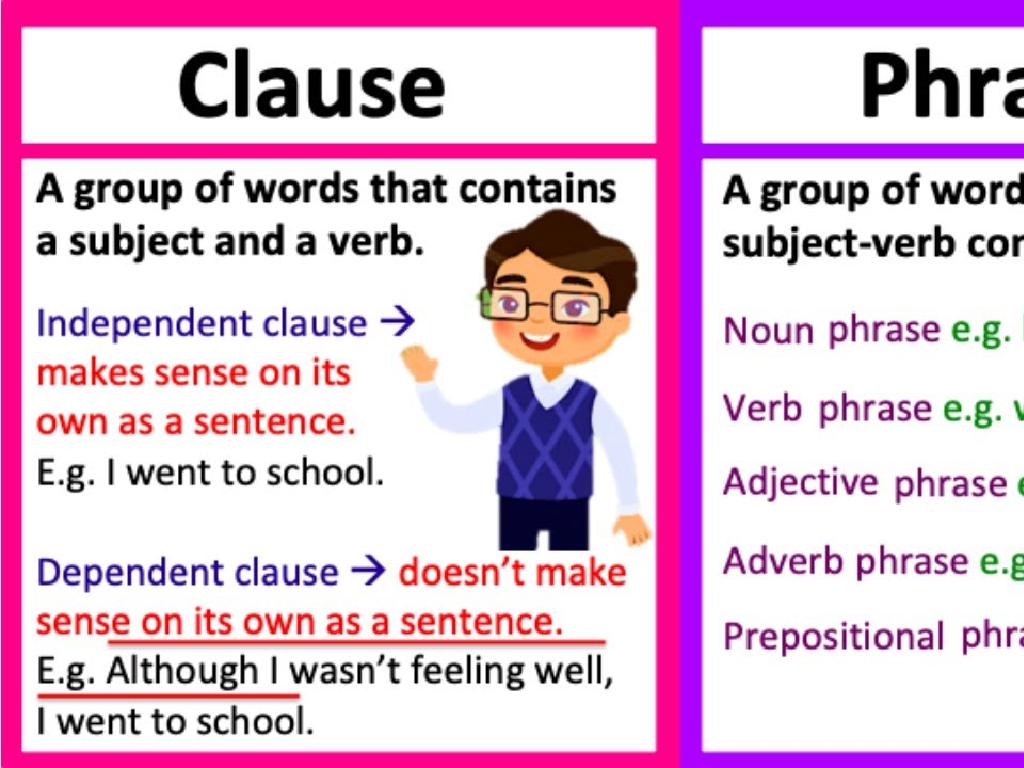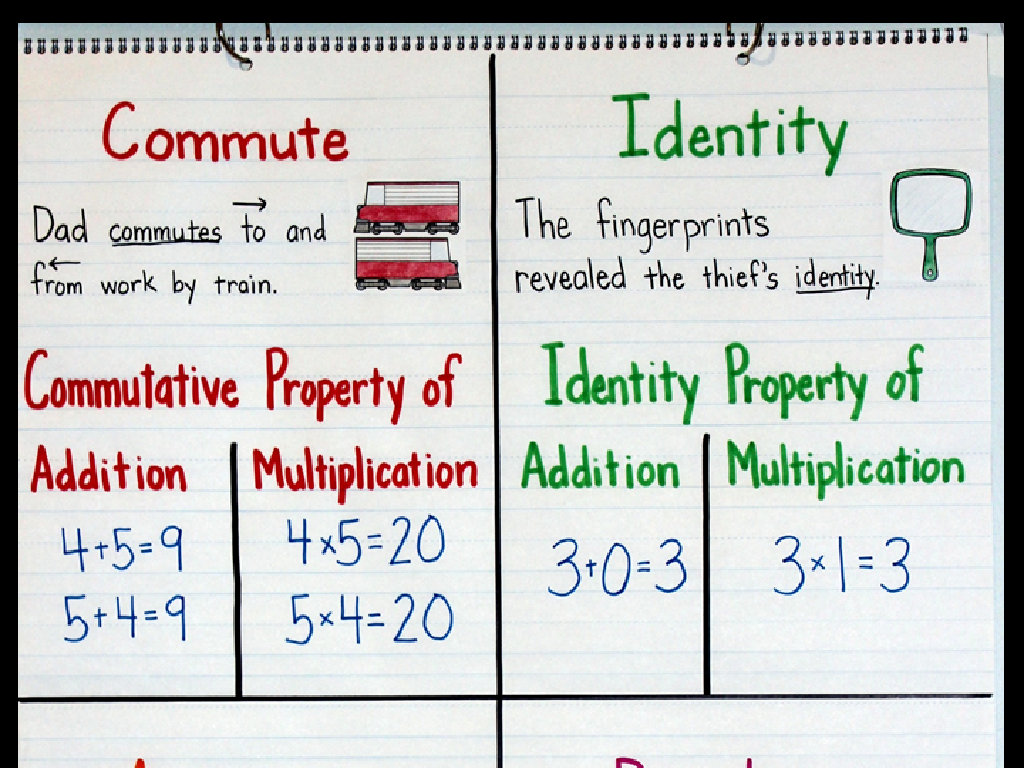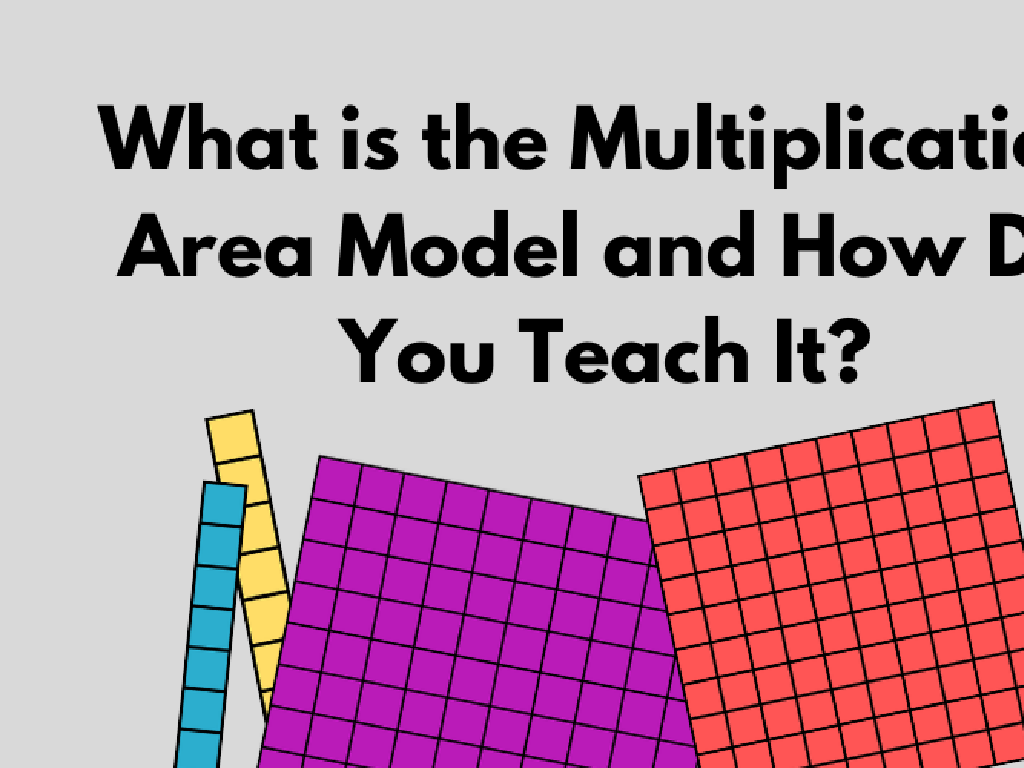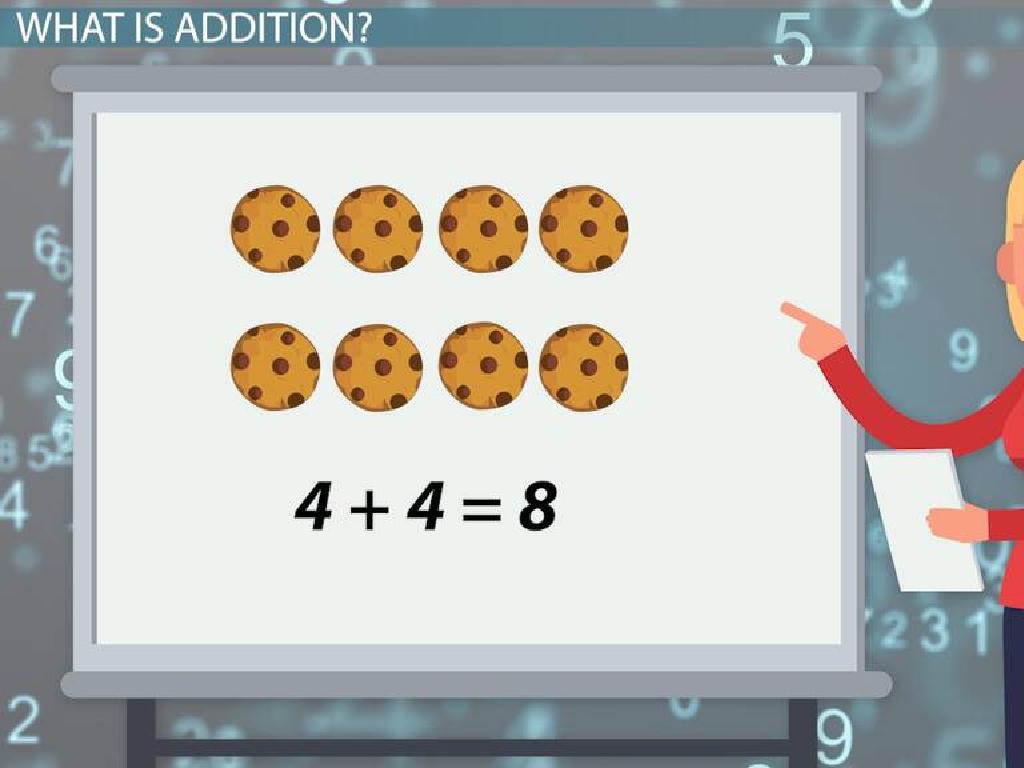Convert Decimals Between Standard And Expanded Form Using Fractions
Subject: Math
Grade: Fourth grade
Topic: Decimals
Please LOG IN to download the presentation. Access is available to registered users only.
View More Content
Converting Decimals to Expanded Form
– What are decimals?
– Decimals represent parts of a whole, like money.
– Converting to expanded form
– Break down a decimal: 3.14 = 3 + 0.1 + 0.04
– Using fractions in expanded form
– Use fractions for parts: 0.1 as 1/10, 0.04 as 4/100
– Decimals in daily life
– Use decimals when dealing with money and measurements.
|
This slide introduces fourth graders to the concept of decimals and their real-life applications, such as in money and measurements. The focus is on teaching students how to convert decimals into expanded form using fractions, which helps them understand the value of each digit in a decimal number. For example, the decimal 3.14 can be broken down into 3 (whole number), 0.1 (tenths place as 1/10), and 0.04 (hundredths place as 4/100). Emphasize the importance of understanding decimals for everyday use and encourage students to practice by finding examples of decimals around them, such as in prices of items or lengths of objects.
Understanding Decimals
– Decimals represent parts of a whole
– Like pieces of a cookie, decimals show a part that’s less than one whole
– Decimals are based on the number 10
– Each move to the right in a decimal number divides by 10
– Places right of the decimal are fractions
– The first place is tenths, then hundredths, like 0.1 is 1/10
– Converting decimals to fractions
– Turn decimals into fractions, e.g., 0.75 becomes 3/4
|
This slide introduces the concept of decimals to fourth-grade students. Begin by explaining that decimals are a way to express parts of a whole, similar to how pieces make up a cookie. Emphasize that the decimal system is based on the number 10, which means that each step to the right in a decimal number is a division by 10. Illustrate how every place value to the right of the decimal point represents a fraction, with the first place being tenths, the second hundredths, and so on. Demonstrate converting decimals to fractions with simple examples, ensuring to simplify the fractions where possible. Encourage students to practice with different decimals to strengthen their understanding.
Converting Decimals: Standard Form
– Standard form: usual number writing
– Example: 0.75 is standard form
– Like reading ‘seventy-five hundredths’
– Shows whole numbers and decimals
– 3 is whole number, .75 is decimal part
– Easy to read and use in math
|
This slide introduces the concept of standard form to fourth-grade students, which is a foundational skill in understanding decimals. Standard form is the typical way we see and write numbers every day, combining whole numbers and their decimal parts. For example, 0.75 is read as ‘seventy-five hundredths’ and is in standard form. Emphasize that standard form is straightforward and commonly used in various math operations. Encourage students to practice writing numbers they encounter in standard form to become comfortable with the concept.
Expanded Form with Fractions
– Understanding expanded form
– Shows value of each digit in a number
– Using fractions for decimals
– Decimals parts as fractions
– Example: Converting 0.75
– 0.75 equals 7/10 plus 5/100
– Practice with different decimals
|
This slide introduces the concept of expanded form and how to express decimals using fractions, which is a key skill in understanding place value and number sense. Start by explaining that expanded form breaks down a number to show the value of each digit. Then, demonstrate how to convert the decimal part of a number into fractions, emphasizing the relationship between place value and the denominator of the fraction. Use 0.75 as a clear example, breaking it down into 7/10 and 5/100 to show the value of the tenths and hundredths place. Encourage students to practice this skill with various decimals to build their confidence and understanding.
Converting Decimals to Expanded Form
– Identify decimal place values
– Each decimal digit has a place value, like tenths, hundredths.
– Write digits as fractions
– Represent each digit as a fraction (e.g., 0.3 is 3/10).
– Combine fractions for expanded form
– Add the fractions together to get the expanded form.
– Practice with examples
– Use examples like 0.52 = 5/10 + 2/100 for practice.
|
This slide introduces the concept of converting decimals to expanded form using fractions, which is a key skill in understanding the value of each digit in a decimal number. Start by explaining the place value system for decimals, moving from left to right: tenths, hundredths, thousandths, etc. Then, show how to write each digit as a fraction with a denominator that corresponds to its place value. Next, demonstrate how to combine these fractions to form the expanded form of the decimal. Provide several examples and encourage students to work through them to solidify their understanding. In the next class, students can practice this skill with a variety of decimals to become proficient in converting between standard and expanded form.
Let’s Practice Together: Decimal to Fraction Expansion
– Convert 0.63 to expanded form
– Identify place values: tenths, hundredths
– 0.6 is in the tenths place, 0.03 is in the hundredths place
– Write as fractions: 6/10, 3/100
– 0.63 equals 6 tenths plus 3 hundredths
– Combine fractions: 6/10 + 3/100
– Adding fractions gives us the expanded form
|
This slide is an interactive class activity where students will learn to convert decimals to expanded form using fractions. Start by explaining the place value of each digit in a decimal. Then, guide students to express each place value as a fraction. For example, in 0.63, the 6 is in the tenths place, so it is 6/10, and the 3 is in the hundredths place, so it is 3/100. Finally, show them how to combine these fractions to represent the original decimal in expanded form. Encourage students to work through this example and provide additional similar problems for practice. This activity will help solidify their understanding of decimals and fractions.
Your Turn: Expanded Form with Fractions
– Convert 0.47 to expanded form
– 0.47 = 4/10 + 7/100
– Convert 0.29 to expanded form
– 0.29 = 2/10 + 9/100
– Convert 0.85 to expanded form
– 0.85 = 8/10 + 5/100
|
This slide is an interactive class activity where students will practice converting decimals to their expanded form using fractions. For each decimal, guide the students to identify the place value of each digit. The first digit after the decimal point is the tenths place, and the second is the hundredths place. Students should express each digit as a fraction (4/10 for the digit 4 in the tenths place, for example) and then add the fractions together to get the expanded form. Encourage students to work through these examples independently or in small groups, and then discuss the answers as a class. Provide additional examples if time allows, and ensure that students understand the concept before moving on.
Class Activity: Decimal Scavenger Hunt
– Find items with decimal numbers
– Write the decimal in standard form
– Convert to expanded form with fractions
– For example, 0.25 becomes 2/10 + 5/100
– Share findings with the class
|
This interactive activity is designed to help students apply their knowledge of decimals and fractions in a fun and engaging way. Students will search the classroom for items that have decimal numbers on them, such as rulers or weight measurements on packages. They will then write these decimals down in standard form. The next step is to convert these decimals into expanded form using fractions, reinforcing the concept that decimals can be expressed as the sum of their fractional parts. Finally, students will share their findings with the class, allowing them to learn from each other’s examples. Possible variations of the activity could include finding decimals in a book, on food labels, or in a catalog. This activity will help solidify their understanding of the relationship between decimals and fractions.
Converting Decimals: A Recap
– Review decimal to expanded form
– Remember, 0.75 = 7/10 + 5/100
– Decimals’ role in daily life
– Used in money, measurements, and time
– Encourage home practice
– Celebrate learning progress
– Share your new skills with family!
|
As we conclude, let’s recap the process of converting decimals to expanded form using fractions, which is a valuable skill in understanding the value of each digit in a decimal number. Emphasize the practical applications of decimals in everyday life, such as in dealing with money, cooking measurements, and telling time. Encourage students to continue practicing at home with the support of their parents or guardians to reinforce their learning. Acknowledge the hard work the students have put into mastering this concept and celebrate their progress. Provide additional practice worksheets for home and suggest fun activities that involve decimals to make learning enjoyable.





